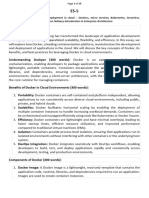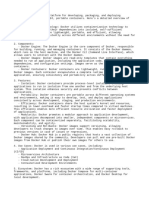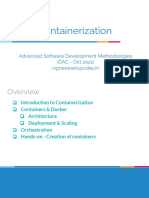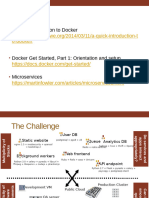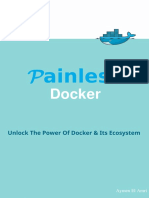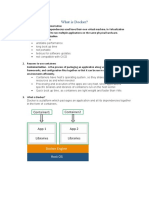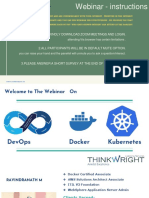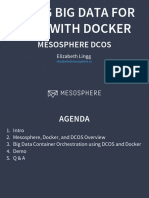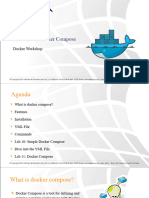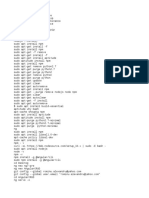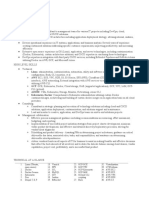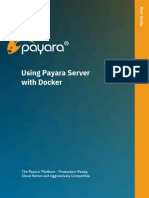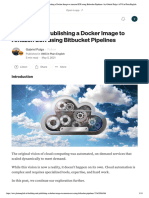0% found this document useful (0 votes)
15 views10 pagesDocker Fundamentals
The document provides a comprehensive overview of Docker fundamentals, including its architecture, components, and the differences between containerization and virtualization. It discusses the advantages of using Docker, the role of microservices, and the features of both Docker Community Edition and Docker Enterprise Edition. Additionally, it outlines pricing tiers for Docker EE and highlights the benefits of each version for different user needs.
Uploaded by
Nesrin BrahimCopyright
© © All Rights Reserved
We take content rights seriously. If you suspect this is your content, claim it here.
Available Formats
Download as PDF, TXT or read online on Scribd
0% found this document useful (0 votes)
15 views10 pagesDocker Fundamentals
The document provides a comprehensive overview of Docker fundamentals, including its architecture, components, and the differences between containerization and virtualization. It discusses the advantages of using Docker, the role of microservices, and the features of both Docker Community Edition and Docker Enterprise Edition. Additionally, it outlines pricing tiers for Docker EE and highlights the benefits of each version for different user needs.
Uploaded by
Nesrin BrahimCopyright
© © All Rights Reserved
We take content rights seriously. If you suspect this is your content, claim it here.
Available Formats
Download as PDF, TXT or read online on Scribd
/ 10









